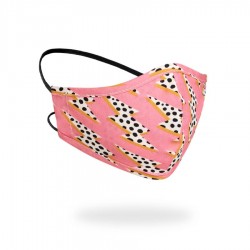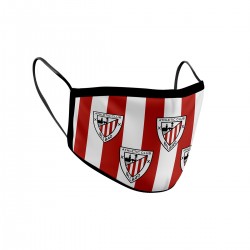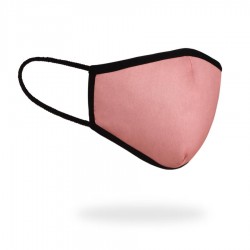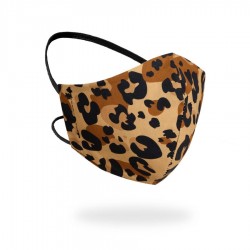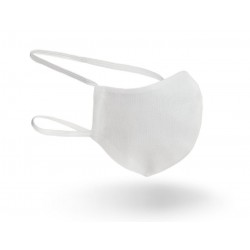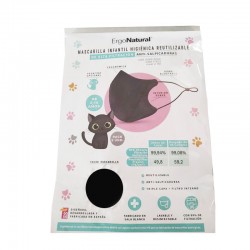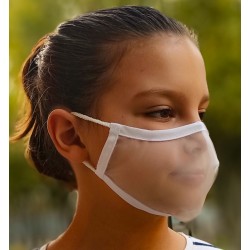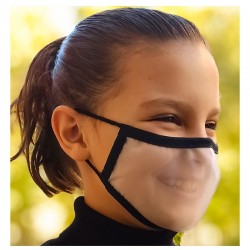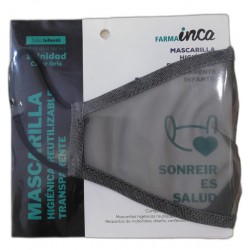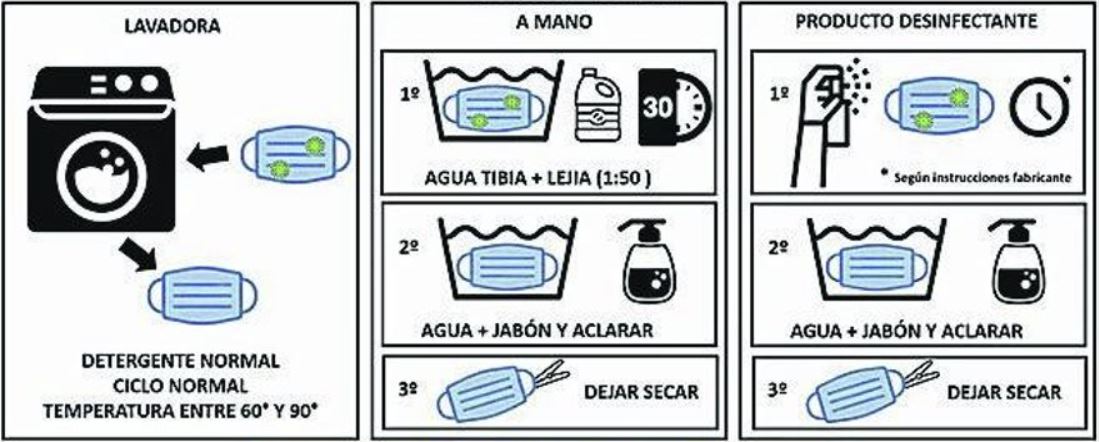Reusable
Reusable and Washable Children's Mask 100% Organic Cotton 13-17 years R40
- -13.34%
- -16.74%
Transparent Reusable Mask Certified Eco-Repellent Color Black Size S - BEYFE
- -12.28%
Transparent Reusable Mask for Children (7-12 years) Gray Color 1 Mask - INCA
- -5.29%
Reusable Cloth Masks
Reusable Masks
Reusable masks that can be washed to disinfect them up to 40 times without making them lose their effectiveness. Made of breathable fabric, they are ecological masks with certified particle filtration protection. For adults and children, in different sizes and various formats and colors, these masks can be used to protect themselves in low-risk areas and in people who are not infected by viruses.
Replace your disposable masks with a much safer, more economical and environmentally responsible system, alleviating the environmental impact that the massive consumption of disposable masks can cause (both ecologically due to the generation of a huge amount of waste, as well as the waste and non-circular consumption habit that it implies). As with these, the recommended continuous use time is 4 hours, after which it is recommended to wash the mask to disinfect it, so that it can be used again later without losing any of its protective properties.
Care and Maintenance of Reusable Masks
Farma2Go reusable masks, like the rest, must be used appropriately and subjected to strict care and hygiene so that they retain all their properties and effectiveness without alteration. Obviously, you must always prioritize following the recommendations offered by the manufacturer, which are usually indicated in the product's technical sheet or safety data sheet.
Before washing the mask, it is essential to keep it away from clean clothing to avoid cross contamination. To do this, we must place it in a container with dirty clothes or, ideally, in an area intended for storing reusable masks before washing. To disinfect and clean, it is advisable to use neutral detergents and use water with the temperature stated in the technical sheet or safety data sheet. It can be washed either by hand or in washing machines, but we should always avoid other techniques that can be found on the internet, such as using ovens or microwaves, which are not tested or supported by scientific data.
How do you put on a mask?
- Avoid touching the inside of the mask.
- Adjust the elastic band around your ears until you are in a comfortable position.
- Adjust the external face of the mask to the structure of the face until it is well deployed and sealed.
- Adjust the nose clip with both hands until it fits firmly on your nose.
- Change the mask if it is wet, damaged or if you have breathing difficulties.
The effectiveness of protection will depend largely on proper handling and use.

It is recommended that adults supervise the placement, use and removal of the mask in children.
General recommendations
Protective masks are a fundamental element to protect health and prevent infections and the spread of viruses , but in no case does their use replace strict monitoring of other protection and hygiene measures recommended for the prevention of infection, as can be social distancing or proper hygiene.
On the part of the healthy population , the best option to prevent infections is the use of hygienic masks, which allow better breathing, accompanying their comfort with good filtration capacity and their possibility of reuse, which has a positive impact on the environment. Hygienic masks that are not purchased from a pharmacy or stores with guarantees such as Farma2Go and lack approval, like homemade masks that are made by hand, must always follow the manufacturing instructions and use the recommended materials for this.
In individuals infected by any virus that may be contagious and spread among the population, as well as in close contacts and people who have been with the positive person in the last week, the use of surgical masks is a priority. Likewise, it is recommended that the protection and particle filtration of the mask be greater than 95% , so FFP2, FFP3 or KN95 are ideal for these purposes.
In general, the use of masks is not appropriate or recommended for children under 3 years of age or for people with respiratory problems or difficulties whose symptoms may be aggravated by the use of masks. People with disabilities, in a situation of dependency that prevents them from being independent in removing and putting on the mask, or those who present behavioral alterations that make its use unfeasible, are also exempt from the obligation to use it. Additionally, when performing activities that cannot be carried out properly due to the mask, it may be permitted not to be worn.
check_circle
check_circle


